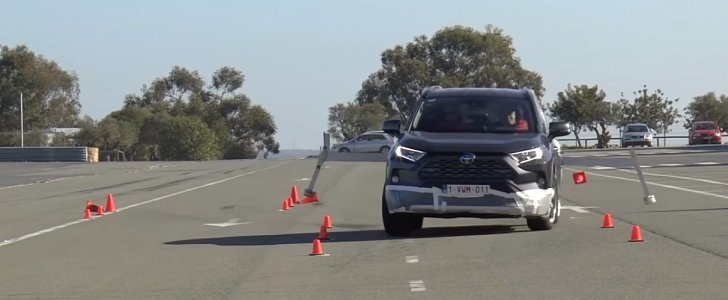Toyota RAV4 Passes Moose Test After Software Update

Back in September, the all-new Toyota RAV4 – redesigned for the 2019 model year – failed Teknikens Värld's "Moose Test." The publication noted the Toyota exhibited "dangerous behavior" because the vehicle's electronic stability control was engaging very late. Toyota fixed the system's late engagement through a software update. Teknikens Värld retested the RAV4 with the software update, and it now earns a passing grade from the publication.
Toyota recalibrated the RAV4's Vehicle Stability Control system, which now allows for much more braking from the system, keeping the crossover planted through the evasive maneuver test. The software update was the only change Toyota made to the vehicle. Teknikens Varld said the Toyota passed the test at 45 miles per hour (72 kilometers per hour). That's better than the top speed it could reach before the update. Before, at 42 mph (68 kph), both the gas-powered and hybrid models, loaded to the manufacturer's test limit, leaned up onto the outer two wheels through the test.
The improvement is welcomed. Safety is at the front of a lot of shoppers' minds when looking for a new vehicle, and an unstable crossover won't win them over. Thankfully, Toyota is making the software update available during the second quarter of 2020; however, customers will need to request it. There's no recall to update new RAV4s already in the hands of customers, and it won't be applied during regular servicing.
The redesigned RAV4 is important to Toyota. It sits in a competitive field of excellent alternatives, which makes it even harder for the Toyota to shine. The 2019 RAV4 rides on Toyota's TNGA platform, though it's nearly identical in size to the previous model. A 2.5-liter four-cylinder engine powers both the gasoline and hybrid models with the gas-only RAV4 getting the new eight-speed automatic while the hybrid delivers power through a continuously variable transmission.
Nouvelles connexes


